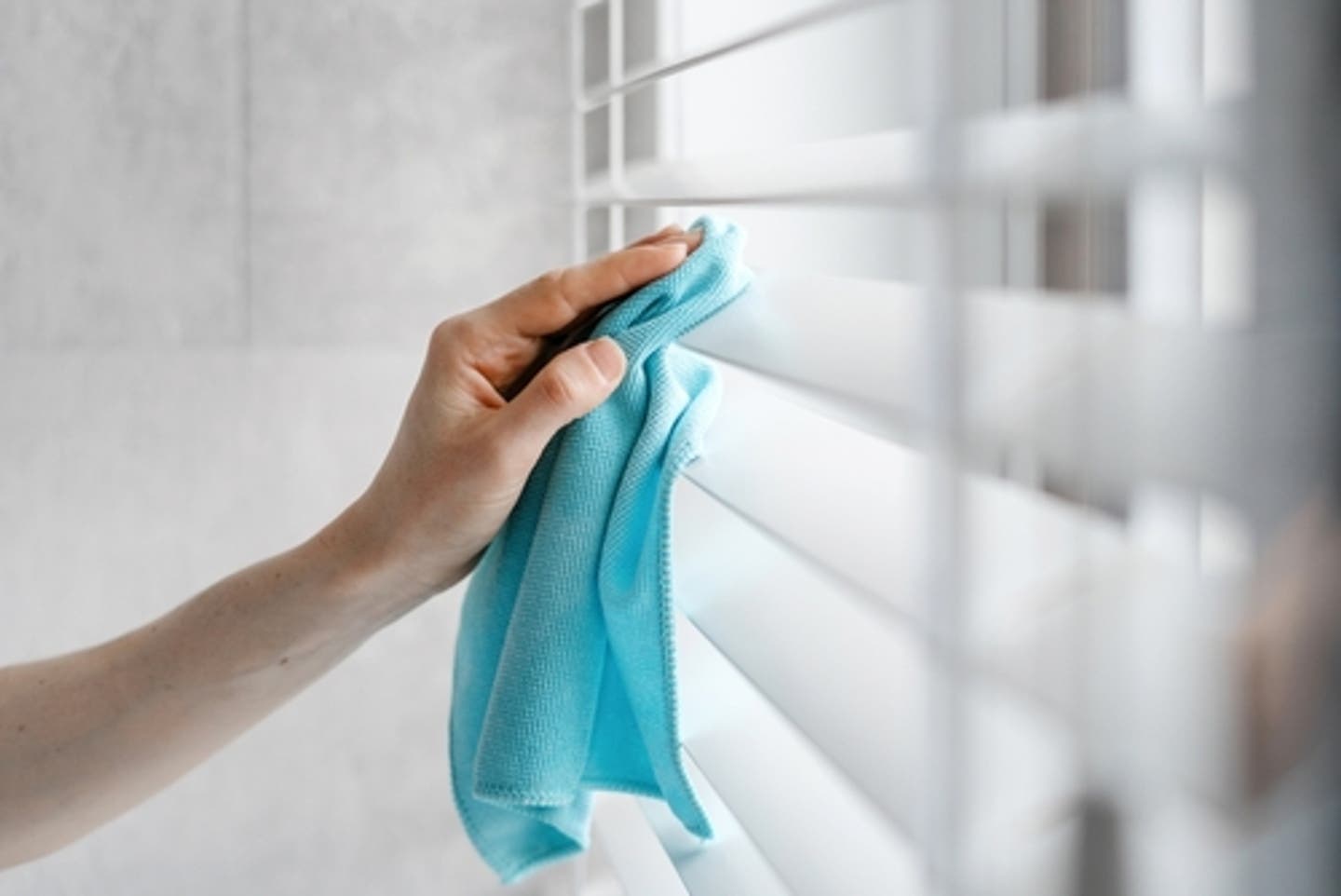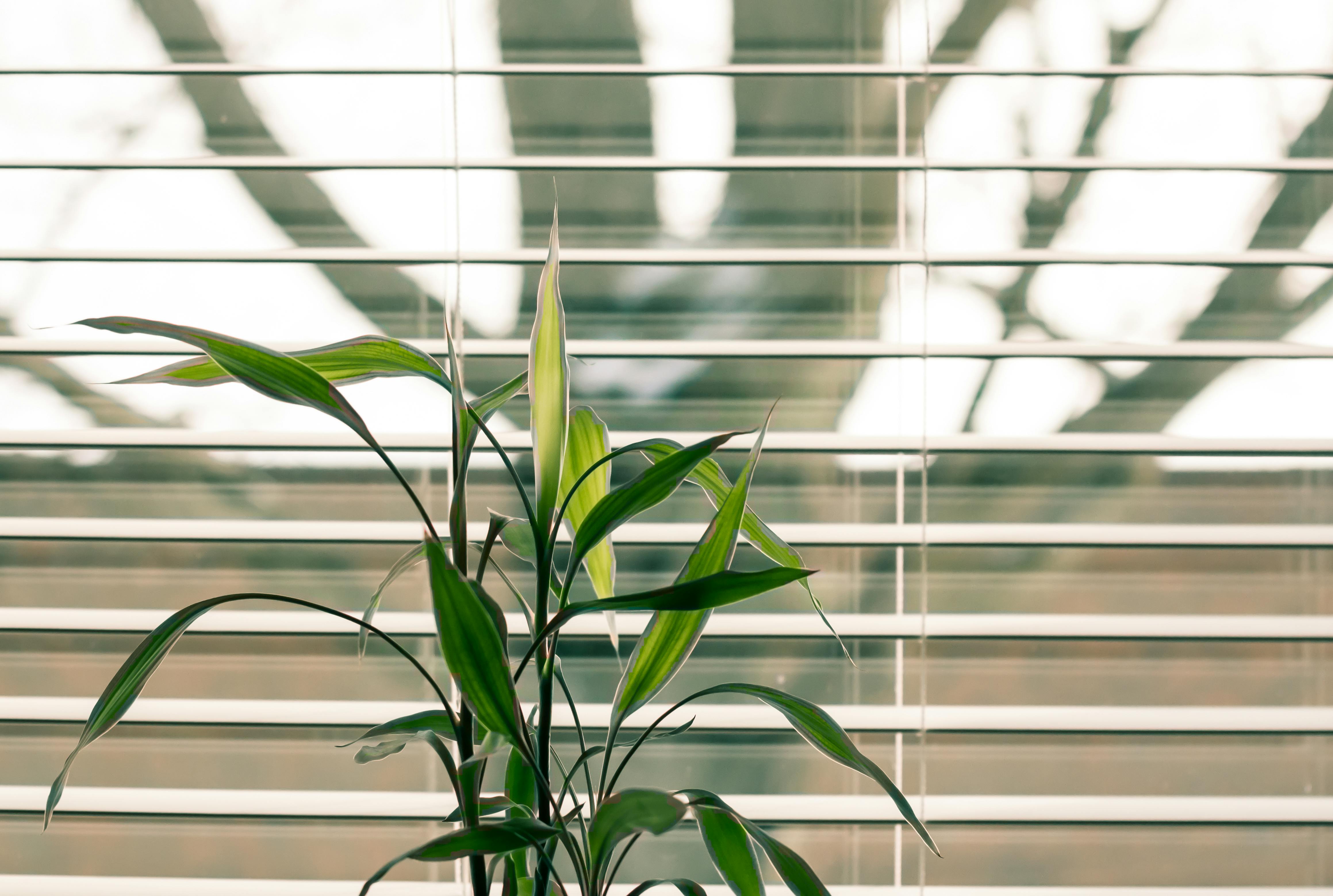
Blinds are a common fixture in homes and businesses. They’re useful for both privacy and aesthetics, but unfortunately, they can be a magnet for dust, dirt, pet hair, and other unwanted specks and grimy particles.
Keeping blinds clean helps ensure, not only that they look good, but that they stay in good working order.
Types of Blinds
There are a number of types of blinds, such as:
- Wood Blinds. One of the most popular types, wood blinds are durable, and best suited for drier, less humid settings.
- Faux Wood Blinds. With the visual look of wood, these blinds provide additional resilience, are since they’re designed to resist warping and fading, they’re ideal for places like bathrooms or kitchens (or areas with high moisture).
- Woven Blinds (also called Matchstick Blinds, Bamboo Blinds, or Woven Wood Shades). These blinds are made from bamboo, grasses, and reeds, helping to create a relaxed environment.
- Cellular Blinds (also called Cellular Shades) use honeycomb-shaped cells ideal for insulation (which can help with the temperature of your room).
- Metal Blinds. Made from aluminum, metal blinds are often selected for their modern look. Lightweight, durable, and resistant to snapping or bending, metal blinds are ideal for humid environments.
- Mini Blinds. Ideal for doors and windows, these blinds are typically easy to operate, and considered a neat, organized choice for smaller locations.
- Vertical Blinds (also called Panel Track Blinds) use a track system that panels run along. They’re considered versatile and modern.
- Zebra Blinds (also called Double Roller Shades) alternate between opaque and sheer bands of fabric, ideal for light adjustment or privacy.
- Roman Blinds (also called Roman Shades) use fabric that folds when raised.
- Roller Blinds (also called Roller Shades) roll up at the top of windows to provide an open view. They’re generally easy to operate, and a common choice due to their simplistic visual appeal.
- Venetian Blinds (also called Venetian Roller Shades) combine aspects of both blinds and shades. Using two layers of sheer material with an S-shaped vane between them, these blinds can be lifted, lowered, and tilted up or down.
- Solar Shades. A type of roller blind or roller shade, solar shades are made with a material that blocks UV rays but still lets sunlight enter the space. They can also help reduce glare and protect flooring and furniture from fading.
- Cordless Blinds. As the name indicates, these blinds don’t have any cords or strings but can still be adjusted.
- Motorized Blinds. Using home devices or other technology, motorized blinds can be adjusted with the simple push of a button.
- Top-Down Bottom-Up Blinds. These types of blinds have the unique ability to either be pulled down or drawn up, providing light and privacy control.

How Often Should You Clean Blinds?
Many factors determine how frequently you should clean your blinds: material, orientation of the blinds in your living space, design, how quickly dust tends to accumulate, and more.
A deep cleaning of blinds is usually only necessary once a year. You can clean them more often, of course. You may swcisw to clean them when you vacuum or dust the room they’re in.
How to Clean Blinds: Tips and Best Practices
You should consider whether the material your blinds are made from can be cleaned with water. And be careful when using chemicals such as bleach and ammonia, since they can damage wood, vinyl, and aluminum blinds.
- For wood blinds, first lower the blinds so they’re fully extended. Then, adjust the slats so they’re slightly open, and use a feather duster to dust each slat. For the last step, apply furniture polish to a soft cloth, then wipe each slat clean
- For faux wood, vinyl, and aluminum blinds, follow the steps outlined above. However, you can also lightly vacuum the blinds and use mild soap and warm water with a sponge or soft cloth to spot clean (with actual wood blinds, water is not recommended). When you’re done, open the blinds to let them air dry.
- Consider using your vacuum’s brush attachments to clean blinds (vacuuming across, rather than up and down).
- For vertical blinds, vacuum or brush downward only. Slats might become dislodged or unhook with upward motion.
- Be sure to clean the surrounding area once you’re finished, as dust and debris may have fallen and accumulated on the floor and windowsill.
- Depending on the blind type, consider fully closing them, or fully lowering them, before cleaning.
- Note: you can fully close wood and faux wood blinds. However, aluminum and vinyl blinds, where the slats overlap, should be tilted downward when cleaning (but avoid fully closing them).
- Consider using a rubber sponge/dry sponge to help remove dust, dirt, and other debris, specifically on vinyl and fabric blinds.
- When spot cleaning, use an all-purpose cleaner, spraying it onto a dry cloth, then wiping down the affected area. Be sure to spray the cleaner on the cloth, rather than directly on the blind itself.
- When cleaning blinds, be sure to clean both sides, if possible, as the side facing the window might be dirtier than the side facing the interior.
SERVPRO Provides General and Specialty Cleaning Services
Whether you need assistance with cleaning your blinds, drapes, or other interior items such as carpet, upholstery, and furniture, or your ceilings, floors, and walls, look no further than SERVPRO. For regular cleaning needs in your home or business, or more specialty cleaning services, SERVPRO is available 24/7 year-round.
Technicians across North America are trained and educated in deep cleaning, providing assistance with items such as hardwood floors, HVAC and air duct cleaning, document restoration, odor removal, vandalism and graffiti cleanup, and more.
For All Types of Cleaning, Contact SERVPRO
Established in 1967, SERVPRO is the #1 choice in fire and water cleanup and restoration*. With 2360 SERVPRO locations in the United States and Canada, there is a franchise near you, ready to assist with all your cleanup, restoration, and construction needs.
SERVPRO franchises across North America are trained and educated in both general cleaning and specialty cleaning, in a variety of industries and fields. This includes everything from retail stores to schools and universities, medical facilities, government offices, and more. For drapery and blind cleaning, whether you need remediation assistance in a single room, or each floor of an expansive commercial property, trust SERVPRO to get the job done. Franchises across the country are committed to helping restore your blinds and clean your drapes, returning your space to pre-loss condition, “Like it never even happened.”
Please visit our FAQ and glossary to learn more about SERVPRO and the cleanup and restoration industry. Reach out today.